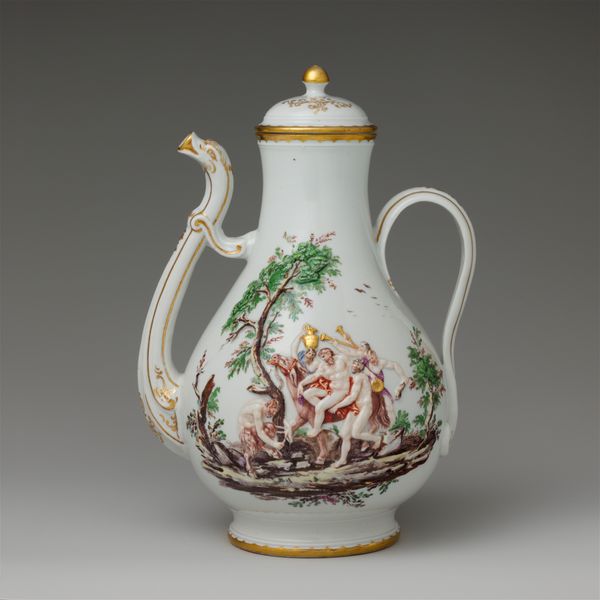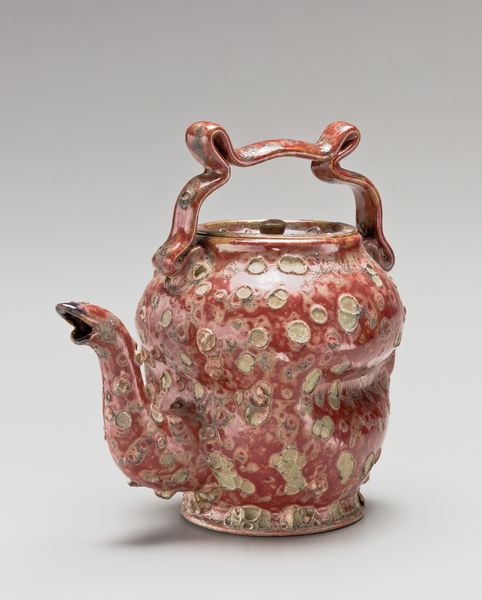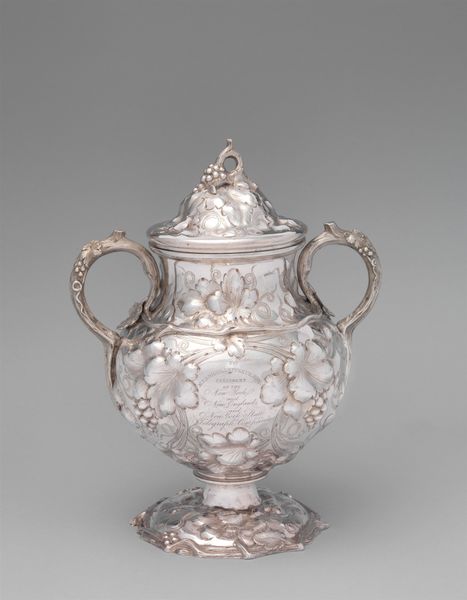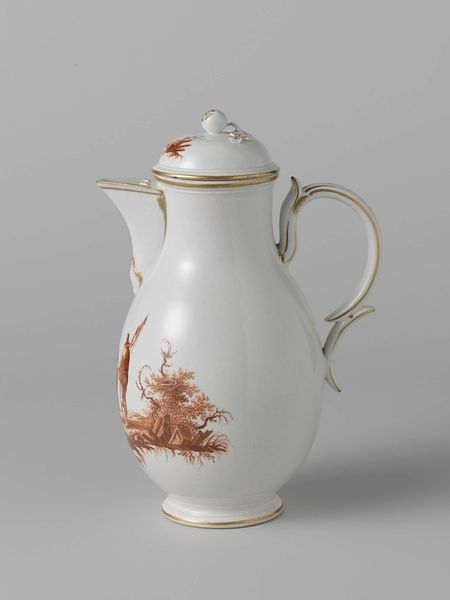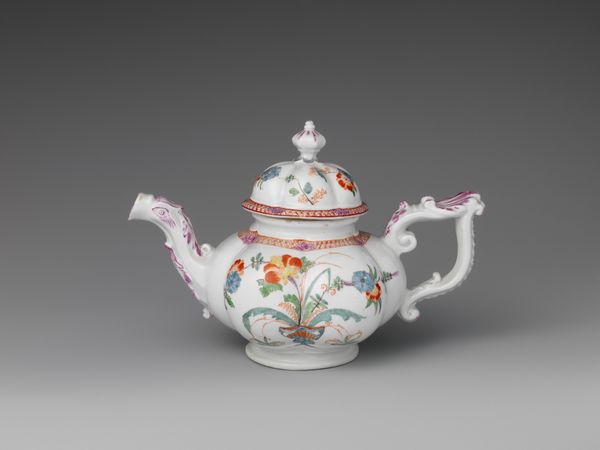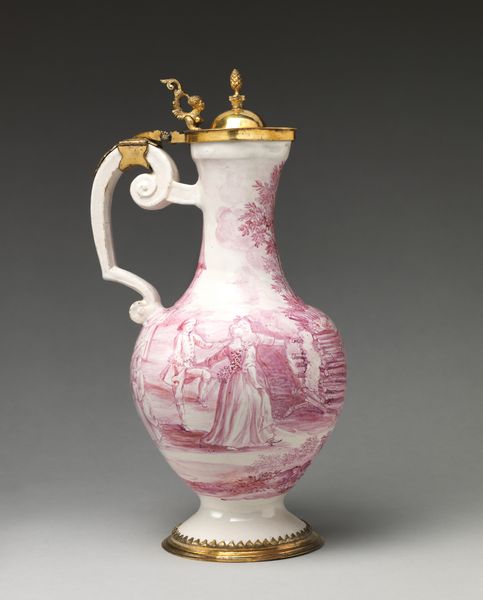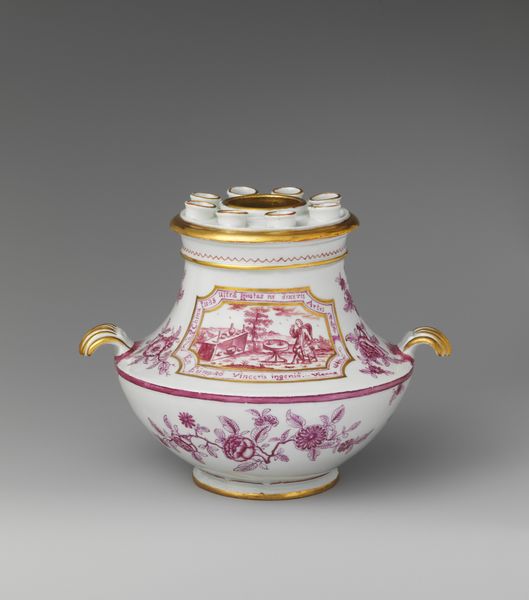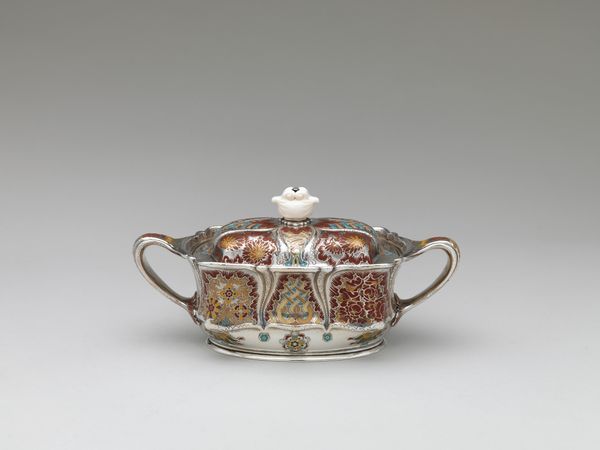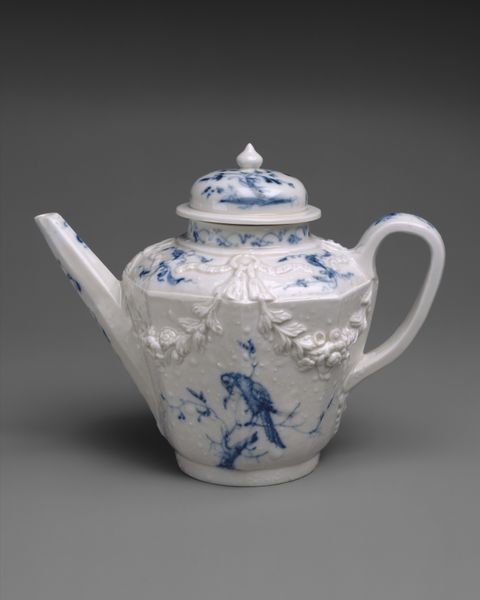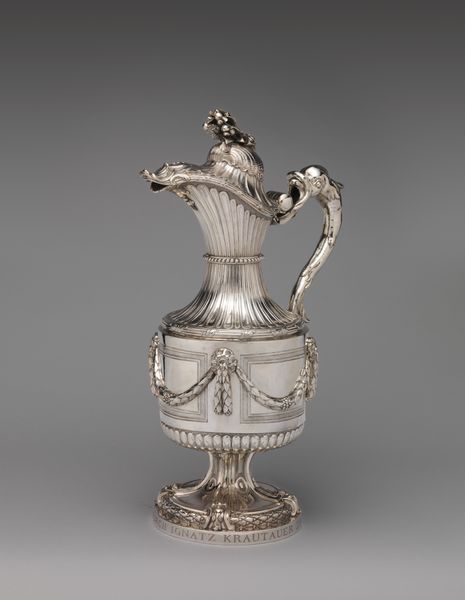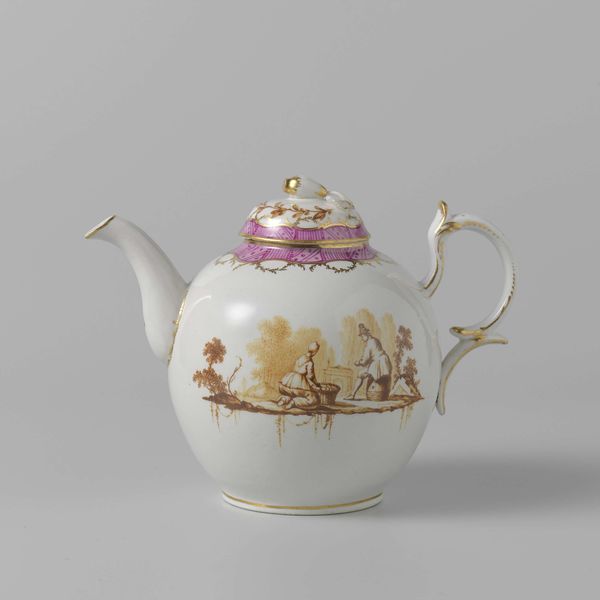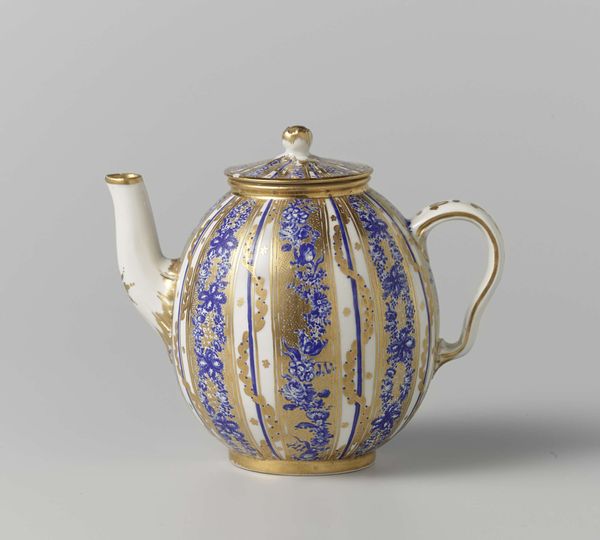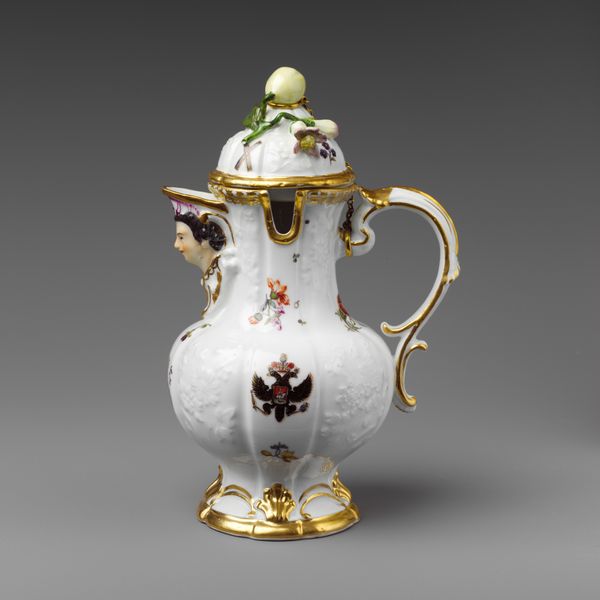
porcelain, sculpture
#
baroque
#
jewelry design
#
porcelain
#
sculpture
#
decorative-art
#
rococo
Dimensions: Overall (confirmed): 8 5/8 x 5 7/16 x 4 5/8 in. (21.9 x 13.8 x 11.7 cm)
Copyright: Public Domain
Curator: Here we have a porcelain coffeepot, crafted by the Meissen Manufactory sometime between 1715 and 1730. It resides here at the Metropolitan Museum of Art. Editor: My first impression is ornate opulence! It is so visually busy, those little cherubs, that it evokes a feeling of aristocratic decadence, which, considering its context, I suppose is the point? Curator: Indeed. Examining this coffeepot reveals insights into the socio-economic context of the early 18th century. The coffeepot, beyond its functional purpose, signals a move towards conspicuous consumption of exotic commodities that underpinned global trade at this time. Consider the implications of drinking coffee, a stimulant, a beverage often loaded with sugars from the colonies. Editor: Exactly. We can't ignore the production aspect here. Meissen was the first to master hard-paste porcelain outside of China, transforming alchemical ambition into industrial innovation. Each of these decorative elements--the elaborate framing, the intricate figural scenes, and the vibrant palette—were created by highly skilled labor in a factory setting. Curator: These decorative scenes borrow heavily from the aesthetic sensibilities of the baroque and rococo periods, emphasizing dynamism and asymmetry. But, there's a distinct break: in place of, say, religious or mythological grandeur, we see more intimate scenes that cater to the sensibilities of a burgeoning leisure class. This resonates with art history's turn from theological to worldly subjects that focused on scenes from aristocratic life. Editor: And we should examine the cultural values embedded in porcelain production. The emphasis on whiteness, on surface perfection—it is a technology dependent on resources extracted globally, processed through intense labor and geared toward the enrichment of European elites. Each stage represents labor and materiality extracted from diverse points of origin. Curator: By acknowledging these factors, we invite a deeper appreciation for the artwork as a tangible expression of early globalized power dynamics and evolving notions of social distinction. Editor: Looking at this again I appreciate that studying this reveals much more than aesthetic tastes: a picture of industrial activity, consumption patterns, global exchange networks, all coalesce. Curator: Absolutely. It serves as a powerful reminder that art, even the most seemingly innocuous decorative art, can unlock so many insights into our shared past.
Comments
No comments
Be the first to comment and join the conversation on the ultimate creative platform.
